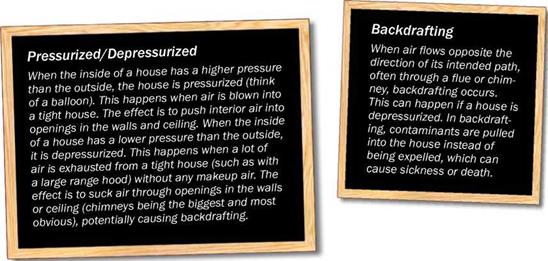Indoor Air Usually Is Dirtier Than Outdoor Air
Because indoor air starts as outdoor air, then grows more polluted from contaminants in a house (see "Indoor Air Pollutants," p. 32),
indoor air needs to be cleaned.
Flushing a house with fresh air removes much of the indoor pollution.

The most obvious way to control some contaminants is to isolate them. Paint thinner and other poisons can be stored in a garden shed. Another way to control contaminants is to eliminate them from the construction process: Use low-VOC paint, low-emitting carpet, and solid wood, rather than particleboard, in furniture and cabinetry. A third way to control the pollution level in a house is to exhaust spaces where contaminants are produced, such as kitchens, laundries, utility/storage rooms, and bathrooms. But even after you’ve isolated, eliminated, and exhausted, there are still pollutant sources that are most practically diluted with controlled whole-house ventilation.






Leave a reply